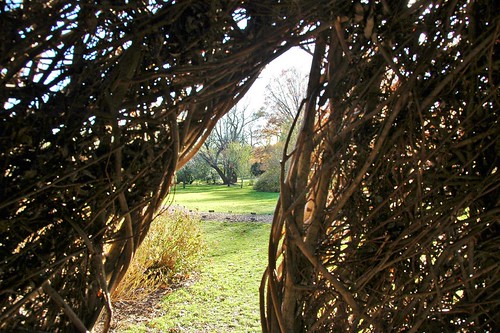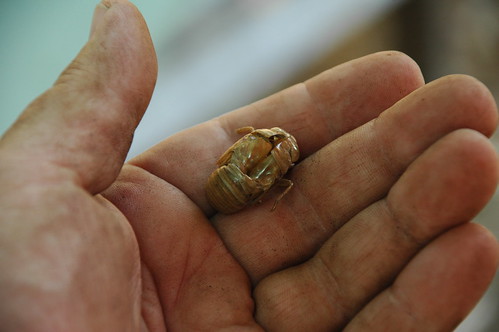Blog Widow and I observed Veteran’s Day by visiting the Brooklyn Botanic Garden. The Fall foliage was still brilliant, especially in the Bonsai Museum. My other must-see destination was “Natural History,” BBG’s first site-specific installation, by Patrick Dougherty. This was my first visit to the Garden since it was installed in August:
The sculpture at BBG is woven from nonnative woody material that was collected from Ocean Breeze Park on Staten Island. The harvesting site was chosen by BBG’s director of Science because of its proximity to the Garden and its large population of nonnative willow (Salix atrocinerea), which is designated an invasive species in New York State. Removal of saplings of this species helped protect the site’s excellent assemblage of herbaceous plants. The park is owned by the City of New York and is targeted for restoration under the City’s PlaNYC sustainability initiative.
During a visit to BBG a year before beginning the work, Dougherty drew sketches and made word associations based on the feelings he experienced while exploring the potential work site. When asked about some of the words that came to mind as he contemplated what he wanted to build in Brooklyn, Dougherty smiled and said “lairs; a place for feral children and wayward adults.”
The sculpture will be on display until August 2011, when it will be dismantled. It’s going to look awesome in snow.
Slideshow
Related Content
Fall Foliage at BBG’s Bonsai Museum, 2010-11-16
Labels: Brooklyn Botanic Garden
Links
Natural History at Brooklyn Botanic Garden, Brooklyn Botanic Garden
Patrick Dougherty


